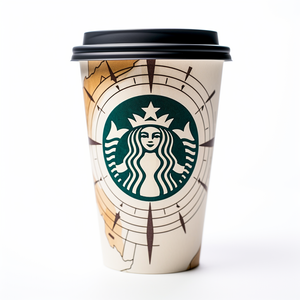Starbucks, the global coffeehouse chain, has mastered the art of captivating a diverse customer base. It started with deciphering their target market and understanding their market’s unique preferences. Locked onto their primary audience, Starbucks caters to the palates of individuals aged 25-40, who possess both intellectual prowess and a healthy income, all while yearning for a premium coffee experience. How do they achieve this? By skillfully crafting moments of delight through an expansive selection of customizable beverages, a sanctuary-like atmosphere that appeals to all, and a personalized touch.
Just as a skilled chef perfects the essence of Italian cuisine, Starbucks has become the master curator of Italian coffee culture, having imported the experience and ambiance of Italian coffee shops. With every sip of their irresistible espresso-based concoctions, they seduced coffee connoisseurs and transformed them into ardent devotees. Perhaps the addictive nature of caffeine had something to do with the loyalty that followed the first sip.
Recognizing the need to broaden their customer base and transcend the boundaries of the morning coffee ritual, Starbucks expanded their menu to embrace a wider array of taste preferences. Think of it as selecting from a buffet of offerings. They introduced "Blonde Roast" coffee, tantalizing tea-based beverages, and a refreshing range of cold and iced drinks. Expanding their reach even further, the chain introduced grab-and-go foods, extending their influence into lunch, afternoon snacks, and even dinner. And let's not forget the seasonal wonders like pumpkin spice beverages, catering to diverse customer palates.
Like a seasoned sommelier exploring the world of entertainment, Starbucks ventured into uncharted territories, establishing their own music recording company, winning eight prestigious Grammys, and even making their mark in the film industry.
However, Starbucks underwent a profound renaissance in the first decade of the 2000s. The company undertook a thoughtful ‘refocusing’ on what had made them extraordinary in the first place: the art of crafting appealing food, beverages, and guest experiences, and delivering unwavering quality.
Today, potential rivals including Dutch Bros and the McDonald’s Corporation’s CosMc’s aim to steal a sip of the to-go beverage market. What separates Starbucks from these competitors? In-store seating. CosMc’s concept locations opened to date provide only drive-thru service. Dutch Bros, too, is mostly known for its drive-thru-forward approach, offering seating in only a handful of its locations.
Unveiling Trends and Capitalizing on Opportunities
Startups and thriving mature companies alike achieve and maintain an inherent understanding of industry trends and embrace potential opportunities to capitalize on market dynamics.
Here are a few essential aspects to keep in mind.
Evaluate market size and growth. When the visionary Howard Schultz joined Starbucks in 1983, coffee shop chains were not yet a nationwide phenomenon. Schultz embarked on a journey of growth, first conquering the Seattle area, then spreading across the West Coast, eventually reaching every corner of the nation, and finally establishing an international presence. By assessing the size and growth rate of your target market, you can gauge the demand for your exceptional offerings and refine your revenue projections. Regional expansion strategies are often ideal for younger companies that don’t have resources for national scale. Industry reports, market research studies, and government data sources are the tools that will unlock these valuable insights.
Study and understand market trends. Just as a master chef stays attuned to shifting taste preferences, recognizing key market trends helps you anticipate and adapt to the ever-changing market landscape. This foresight empowers you to develop innovative products or services that address emerging needs, or nimbly pivot your go-to-market strategy to outpace the competition. For Starbucks, embracing the tea revolution, unveiling the alluring 'Blonde Roast,' and adding food to the menu are prime examples of their knack for staying ahead of the curve.
Assess market opportunities. Like a seasoned mixologist exploring unusual flavor combinations, analyzing market gaps and untapped opportunities unveils hidden treasures. Seek out underserved customer segments, unmet needs, and emerging niches to inform your product development endeavors and guide your go-to-market strategy. By seizing these opportunities, you can brew a unique value proposition that sets you apart from the crowded field of competitors. Starbucks knows that consumer tastes are like delicate spices, always in flux, demanding data-driven decisions to navigate this caffeinated maze.
Keep the ‘North Star’ in focus. Every company begins with a clear go-to-market strategy; yet over time, many lose sight of their guiding light. Just as a seasoned chef revisits their signature recipe, it is vital to rediscover and refine your strategy when the occasion demands it.
When you find yourself in need of developing or reinvigorating your go-to-market strategy, the path to success lies in collaborating with full-service go-to-market strategy consultants. My team and I would be overjoyed to join you at the table, savor your ambitions, and craft a recipe for unrivaled success.

